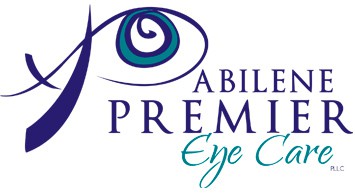Eye Conditions
Dry Eye
Dry eyes often goes undiagnosed and untreated despite being a very common and treatable disease. Currently between 20 to 25 million of Americans suffer from dry eyes. This includes 3.2 million women over the age of 50, and 15% of all Americans over the age of 65.
What are Dry Eyes?
Dry eye is a condition in which there are insufficient tears, or a poor quality of tears to lubricate and nourish the eye. Tears are necessary for maintaining the health of the front surface of the eye, and for providing clear vision. Dry eye is a common and often chronic problem, particularly in older adults. This can also happen for a number of other reasons including hormonal changes, side effect of medications and disease, and environmental causes.
Tears are important to your visual health. With each blink of the eyelids, tears are spread across the front surface of the eye, known as the cornea. Tears help provide lubrication, reduce the risk of eye infection, wash away foreign matter in the eye, and keep the surface of the eyes smooth and clear. Excess tears in the eyes flow into small drainage ducts, in the inner corners of the eyelids, which drain to the back of the nose.
Dry eyes can result from an improper balance of tear production and drainage.

- Inadequate amount of tears – Tears are produced by several glands in and around the eyelids. Tear production tends to diminish with age, with various medical conditions, or as a side effect of certain medicines. Environmental conditions such as wind and dry climates can also affect tear volume by increasing tear evaporation. When the normal amount of tear production decreases, or tears evaporate too quickly from the eyes, symptoms of dry eye can develop.
- Poor quality of tears – Tears are made up of three layers: oil, water, and mucus. Each component serves a function in protecting and nourishing the front surface of the eye. A smooth oil layer helps to prevent evaporation of the water layer, while the mucin layer functions in spreading the tears evenly over the surface of the eye. If the tears evaporate too quickly or do not spread evenly over the cornea due to deficiencies with any of the three tear layers, dry eye symptoms can develop. Symptoms may include (but are not limited to) fluctuating vision, light sensitivity, or heavy eye lids. You may also experience eye irritation to smoke or wind, decreased tolerance to reading, or working on the computer. Some people may also experience discomfort when wearing contact lenses.
The most common form of dry eyes is due to an inadequate amount of the water layer of tears. This condition, called keratoconjunctivitis sicca (KCS), is also referred to as dry eye syndrome, or dry eye disease.
Excess tearing from “dry eye” may seem confusing but it is the eye’s response to discomfort. If the tears responsible for monitoring lubrication do not keep the eye wet enough, the eye will then become irritated. Eye irritation prompts the glands that make tears (lacrimal gland) to release a large volume of tears, overwhelming the tear drainage system. These excess tears then overflow from your eye.
Treatments for dry eyes aim to restore or maintain the normal amount of tears in the eye to minimize dryness and related discomfort, and to maintain eye health.
What causes dry eyes?
The development of dry eyes can have many causes. They include:
- Age — dry eye is a part of the natural aging process. The majority of people over age 65 experience some symptoms of dry eyes.
- Gender — women are more likely to develop dry eyes due to hormonal changes caused by pregnancy, the use of oral contraceptives, or menopause.
- Medications — certain medicines, including antihistamines, decongestants, blood pressure medications and antidepressants, can reduce the amount of tears produced in the eyes.
- Medical conditions — persons with rheumatoid arthritis, diabetes and thyroid problems are more likely to have symptoms of dry eyes. Also, problems with inflammation of the eyelids (blepharitis), inflammation of the surfaces of the eye, or the inward or outward turning of eyelids can cause dry eyes to develop.
- Environmental conditions — exposure to smoke (including cigarette smoke), wind and dry climates can increase tear evaporation resulting in dry eye symptoms. Failure to blink regularly, such as when staring at a computer screen for long periods of time, can also contribute to drying of the eyes.
- Other factors — long term use of contact lenses can be a factor in the development of dry eyes.
How are dry eyes diagnosed?
Dry eyes can be diagnosed through a comprehensive eye examination. Testing, with special emphasis on the evaluation of the quantity and quality of tears produced by the eyes, may include:
- Patient history to determine any symptoms the patient is experiencing and the presence of any general health problems, medications taken, or environmental factors that may be contributing to the dry eye problem.
- External examination of the eye including lid structure and blink dynamics.
- Evaluation of the eyelids and cornea using bright light and magnification.
- Measurement of the quantity and quality of tears for any abnormalities.

